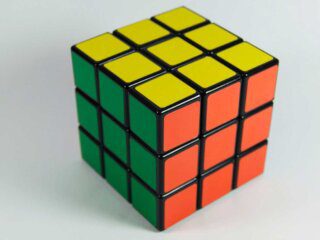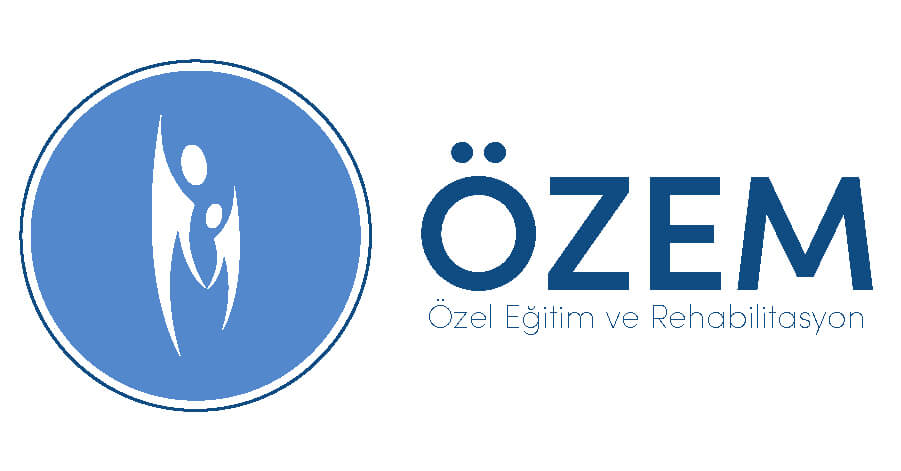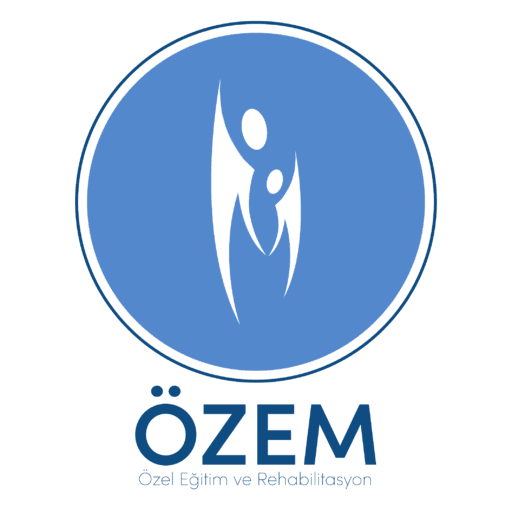Specific Learning Disability Test Battery
specific learning disability; individuals with normal or above normal intelligence, read, It is a disorder diagnosed with a significantly lower level of mathematics and written expression than expected.. It is a developmental specific learning disability.
specific learning disability, a generic term; because it contains many problems.
dyslexia for reading problems (dyslexia), dysgraphia for writing problems (disgraphia), dyscalculia for math problems (dyscalculia) terms are used and specific learning difficulties include all of these problems..
Findings become evident as the child has to use the skill area in question.. A child with SLD can be diagnosed at a very early age. However, problems attract attention with the beginning of school..
The Specific Learning Disability Test Battery, which is the only test to be applied when this and a similar situation is suspected.; attending primary and secondary school 5. Applicable to grade students. In special cases where the student is far behind the grade level 6. ve 7. Can also be applied to grade students.
Test student;
- Turkish ( literacy)
- Mathematics
- Visual perception
- Drawing
- Arrangement
- Laterilization
- Right-left dominance
Measures skills and diagnoses.
The biggest plus of the test is; is to guide the preparation of the child's IEP..
In addition, if there is a different situation other than ÖÖG (articulation problem, difficulty holding a pencil, border intelligence, dull intelligence, lack of attention, such as hyperactivity) ensures that this situation is noticed and necessary guidance is made..
tests
GOBDÖ-2-TV
Identifying an individual with autistic disorder, severe behavioral problems can be evaluated and behavioral improvements can be determined.
MMPI (MINNESOTA VERSATILE PERSONALITY INVENTORY)
16 This test, which provides detailed information about the psychological states of individuals aged and above, and is used as an assessment tool to assist in diagnosis, also aims to objectively evaluate the individual's personal and social adjustment..
The MMPI is not just a test for psychological problems.. Apart from determining whether the applied person has psychological problems, it is able to determine what kind of person the person is in general., It can also reveal the normal personality traits of the applied person..
WISC-R (WECHSLER INTELLIGENCE SCALE FOR CHILDREN)
With the WISC – R intelligence test, which is applied to determine the mental performance of individuals, you will be able to follow your child's mental development with scientific results.. With the results of the WISC-R intelligence test, you can take more effective measures by having an idea about your child's mental development and have the chance to take early precautions against possible problems..
FROSTIG VISUAL PERCEPTION TEST
Visual perception, recognizing visual stimuli, The ability to distinguish and interpret in relation to previous experiences is called. Thanks to their visual perception abilities, children can read, to write, they learn to do arithmetic and all other skills necessary for their success in school. Visual perception problems, specification, separation, recall, is caused by a lack of interpretation of the visual sense.
TAT
Thematic Perception Test
1935 in H.A.. MURRAY ve C. D. Published by Morgan et al at the Harvard Psychology clinic. 14- 40 Applicable to individuals between the ages of. The snow on which various human situations are depicted and the story revealed by the imagination of the individual are analyzed.. in total 30 there is a card. Specific themes on cards, supplied as pictures. Some cards are for men only and some are for women.. The client is asked to tell a story by looking at the picture.. The story told is similar to a real life story.. Important elements for the person, problems come to the fore or recur. Makes a projective personality analysis.

Bender Gestalt Psychomotor Perception
and Coordination Test
5 age 6 with the moon 11 age 11 This test, which can be applied in the range of months, retardation in both adults and children, using it as a developmental test to see visual motor function in children, regression, it sheds light on detecting loss of function and organic brain damage and finding personality deviations, especially in regression cases. (mental retardation, aphasia, various organic brain injuries, psychoses, like real illnesses).
WISC-R
Wechsler Intelligence Scale for Children
applied to determine the mental performance of individuals. WISC–R With the intelligence test, you will be able to follow your child's mental development with scientific results.. WISC–R By having an idea about your child's mental development with the results of the intelligence test, you can take more effective measures and have the chance to take early precautions about possible problems..

Attention
texts
MARKING TESTİ
Marking Test (İT; Verbal and Nonverbal Cancellation Tests), Developed by Weintraub and Mesulam in 1985.
IT visual-spatial detection and scanning, attention, measures reaction speed and agility. IT is widely used in the evaluation of neglect syndrome related to the visual field., sensitive to damage to the right cerebral hemisphere and especially to the parietal lobe.
İT, It is a qualified neuropsychological attention test that can be applied to anyone who can read and write..
STROOP TESTS TBAG FORM
The Stroop Test was first used by the Stroop (1935) developed by, then various forms of the test were arranged. The form of the Stroop Test within the scope of BİLNOT Battery, formed by combining the original Stroop Test and the Victorian form. On behalf of the form in question, To the Basic Sciences Research Group that supports TÜBİTAK's BİLNOT Battery project (TBAG) in honor of, Stroop Test is called TBAG Form.
Perceptual setup of the Stroop Test, the ability to change in line with changing demands and under a “disruptive effect”; It measures their ability to suppress a habitual behavior pattern and engage in an unusual behavior, as well as focused attention.. The test is more sensitive to left frontal and especially orbitofrontal cortex damage..
The Stroop Test is a qualified neuropsychological attention test that can be applied to anyone who can read and write and can distinguish colors..
VISUAL AUDIBLE NUMBERS TEST B FORM
Audio Visual Digit Sequence Test Form B (GİSD-B) Prepared by Karakaş and Yalın and 1993 made available in. Test Koppitz (1977) The Audio-Visual Digit Sequence Test prepared by (Visual Aural Digit Span Test: WIRE), methodologically and theoretically reorganized.
GISD-B has norm values for all developmental periods from childhood to advanced age.. GİSD-B, in our country, is the only psychometric tool with a normalization study in such an age range (Karakaş and Lean, 2009).
Limited capacitance in GISD-B, measured in different forms of sensory-motor fusion. GISD-B assessing sequencing ability, like other number string tests, your attention (or short-term memory) It is also used to measure.
GISD-B, a neuropsychological test, with the functionality of the prefrontal regions in terms of sequencing ability and complex attention, It is related to the functionality of the hippocampus in the brain, due to its association with short-term memory capacity..
GİSD-B, It is a qualified neuropsychological attention-memory test that can be applied to anyone who can visually distinguish numbers and write numbers..
tests

GOODENOUGH BİR ADAM OFFICIAL BOOT TEST
Goodenough drawing a human drawing test, It aims to measure the mental development of individuals.. It gives information about the general ability levels of young children.. It's a drawing test. Provides important information in the determination of mental retardation.
ANKARA DEVELOPMENT SCAN INVENTORY (BE CAREFUL)
0-6 With AGTE, which is applied to evaluate children between the; children's, 0-3 starting from the month, 48-72 in monthly periods up to the month of the month; language development, mental skills, small-muscle development, big-muscle development, social development and self-care skills can be examined and observed one by one.
AGTE provides mothers with in-depth and systematic information on infant and child development., It provides the opportunity to better observe developmentally important behaviors and to get to know children better..
LOUISE DUSS PSYCHANALYTICS STORIES TEST
Duss Story Test, It is one of the most developed techniques prepared to solve the complexes and problems of children.. The stories used in this test are mostly structured in a way that they can understand and be interested in..
WAIS ADULTS INTELLIGENCE SCALE (17-99 AGE)
Psychologists commonly use various psychological scales when evaluating, and intelligence scales, It has an important place in mental and neuropsychological evaluation.. Professionals exploring cognitive abilities, over the years they have further explored traditional theories of intelligence and the measurement of mental function.. As a result of these studies, new theories of intelligence have been put forward or old ones have been revised. (Heights, 1997). 1980Starting from the 's, new ones were added to individual intelligence scales or existing scales were restructured. (Daniel, 1997).
BENTON VISUAL MEMORY TESTİ
8 applicable to individuals over the age of, attention of the individual, able to provide information on perception and memory status, It is an attention and perception test in which attention deficit can be detected.. It can be used in situations where visual-spatial memory is desired to be measured.. Benton Visual Memory Test, Can evaluate shape memory instantaneously and delayed; beyond that, visual memory, visual perception and motor abilities.
METROPOLITAN SCHOOL MATURITY TESTİ (4-6AGE)
With the Metropolitan School Readiness Test, you can get healthy data about how well your child is ready for school and their level..
CAS
Cognitive Assessment System
CAS’İN TANPUSH
Intelligence concept, It is one of the most important contributions of psychology, which has existed for more than a century, to humanity. (Anastasi, 1988). Researchers in the last fifty years of this period, have gained significant knowledge about intelligence in the fields of applied and theoretical study.. Lately, Intense efforts have been made in the field of applied psychology to produce tests based on contemporary psychology knowledge. (Kaufman ve Kaufman, 1983, 1993; Woodcock ve Johnson, 1989). These tests, pertaining to intelligence studied by contemporary psychologists; cognitive, neuropsychological and functional (factorial) based on opinions. These opinions, They are defined as unconventional views because of the purpose of combining theory and practice. (Naglieri, 1996a). CAS Cognitive Assessment System), which has recently been introduced; It is among the non-traditional approaches to intelligence as it is compatible with the view that "intelligence is based on cognitive processes"..
CAS, 5-17 Planning of individuals between the ages of, Attention, Developed to assess Concurrent and Sequential Cognitive processing. There are many reasons for choosing the PASS Theory, which forms the basis of CAS.. The most important of these reasons; CROCKER ve ALGINA (1986)'s psychological measures, even if they are based on observable responses, they will be of little use and meaning if not interpreted in the light of the theoretical view to which they adhere..
Cognitive Processing and PASS theory
PASS Theory, presents a view that reconceptualizes intelligence as cognitive operations. This theory explains human cognitive functions., Planning, which is accepted as the operations that form the basis of knowledge, Attention, Based on Concurrent and Sequential Cognitive Processing (Das and. Al., 1994). According to this theory, human cognitive activities 4 consists of parts:
PASS Theory, THE, NAGLIERI ve KIRBY (1994) It was created by summarizing today's theoretical and applied psychology fields.. DAS et al., (1966, 1970, 1973, 1976, 1980, 1982) With the PASS Theory, they reinterpret intelligence based on cognitive views and while doing this, they connect with Luria's views. (The, Kirby ve Jarman, 1979). Luria, American, He is the most cited scientist in British and Canadian psychology journals. (Solso ve Hoffman, 1991, p. 251). Das and friends, They suggested that PASS cognitive processes are the basic structures of human cognitive functions..
- Provides cognitive control planning transactions.
- Use of processes to achieve the desired goal, determination and self
control, providing focused selective cognitive activity over a period of time attention transactions.
- There are two forms of processing information. Simultaneous ve Consecutive cognitive processes.
CAS (Cognitive Assessment System) 5-17 It is a tool developed to evaluate the cognitive processing of children between the ages of. PASS Developed based on the theory CAS; Planning, Attention, Concurrent and Successive Cognitive Processing It measures a total of four cognitive processing areas..
your scales Arrangement
CAS is organized to give three different measurement results. Full Scale, PASS (Planning, Attention, Concurrent and Consecutive) Cognitive Processing Scales and three subtests in each of these four scales.
For that oilCheck
The CAS provides a general measure of cognitive function called the Full Scale Score.. Full Scale Score, Planning, Attention, It is a standard score based on combining the Concurrent and Sequential Processing subtests with equal weight.. Full Scale 100 point mean norm value and 15 the score has a standard deviation value. The Full Scale score provides an indication of the general level of the individual's cognitive functions..
PASS cognitive Process scales
CAS four cognitive processes (Planning, Attention, Concurrent and Successive Cognitive Processing) covers. Each of these four scales is an equally weighted whole of the subtests in the scale.. As with Full Scale scores, each PASS scale 100 point average norm value and 15 has a standard deviation of one point. These four scales; individual, represents the cognitive function and is used to identify areas of strength and weakness in cognitive processes..
Alt tests
There are two forms of CAS subtests used to derive PASS Scale Scores and Full Scale Scores.. One of them is the Basic Battery 8 includes subtest. The other is, 12 It is a Standard Battery consisting of subtests.
Planning Scale Subtests: Matching Numbers, Scheduled Codes and Scheduled Links
Attention Scale Subtests: Expressive Attention, Finding Numbers, Perceptual Attention
Simultaneous Cognitive Processing Scale Subtests: Matrices, Verbal-Spatial Relationships, Shape Memory
Successive Cognitive Processing Scale Subtests: Word Series, Sentence Repeat, Speech Rate (5-7 for ages), Sentence Questions (8-17 for ages)
Application of CAS and Use areas
CAS, 5-17 age school age children to determine the proficiency and level of cognitive processes was developed with the aim of. CAS is also used to evaluate the following situations:.
Attention Deficit and hyperactivity Evaluation of Children with the Disorder
CAS, It is an appropriate tool for the assessment of cognitive processing characteristics of children with attention deficit and hyperactivity disorder.. The Attention and Planning Scales are particularly important given this diagnosis. Attention Scale; individual, in selective attention, It allows practitioners to determine how successful they are in turning to appropriate stimuli and resisting inappropriate stimuli.. Planning Scale; children's, provides practitioners with a good assessment tool in determining how successful they are in organizing cognitive activities and determining their level of programming themselves..
Learning difficulty Evaluation of What Happened
CAS, It is also a suitable tool for the assessment of cognitive processes underlying learning disabilities.. For example, May help reveal successive Cognitive Processing problems associated with decryption in reading. Concurrent and Sequential Cognitive Processing Scores may be related to reading comprehension. Same way, Can be used to identify Planning difficulties associated with solving math problems.
Mental Disabled Evaluation of What Happened
CAS is useful in two ways in determining the probability of a child having an intellectual disability.. First, provides an assessment with little need for information the child learns later through education. Thus, the child will not fail the tests due to lack of knowledge and his natural performance will be fully reflected in the scores.. Secondly, It will help in differential diagnosis as it allows evaluation of many different cognitive processes..
Traumatic Brain Evaluation of the Injured
Each of the four PASS scales, Allows measurement of a wide variety of cognitive processes susceptible to traumatic brain injury. Organization, impulse control, attention, problem solving and planning are especially problematic in children with traumatic brain injury. (Savage ve Wollcott, 1994) and CAS covers these cognitive functions.
Seriously Emotional Disorders Evaluation of What Happened
CAS, provides information that may also be helpful in the assessment of children with severe emotional disorders. Behavior control of these children, Social problems with other people and difficulties with impulsivity may be associated with low scores on the CAS Planning scale..
Gifted children's Evaluation
All four scales of the CAS allow the assessment of cognitive processes necessary for the assessment of superiority.. CAS enables comprehensive measurement of cognitive processing and can identify individuals who excel in cognitive areas that cannot be measured by traditional intelligence tests.. Can identify children who excel in a wider range of areas than those identified by traditional tests, due to the wider range of functions measured.
Planning Problems Identifying What Happened
CAS, Provides a systematic and structured method for assessing the child's level of planning and organization (Weyandt and Willis, 1994). Planning subtests allow the child to organize activities., use appropriate strategies, impulsiveness, sensitive to regulating and evaluating their behavior.
of success Previously to take a nap
CAS, aims to predict children's academic success. Each of the four PASS scales is associated with success and failure in specific areas of academic performance.. Full Scale Standard Score, It is the best indicator for predicting key success.. Standard scores for each of the four PASS scales are also associated with specific areas of academic performance..
UNIVERSITY ve LEGAL RIGHTS AND OBLIGATIONS OF TRAINERS
Istanbul University Continuing Education Application and Research Center and CAS, Legal rights and obligations of Istanbul University and its traineesEducation Agreement” is guaranteed with.

